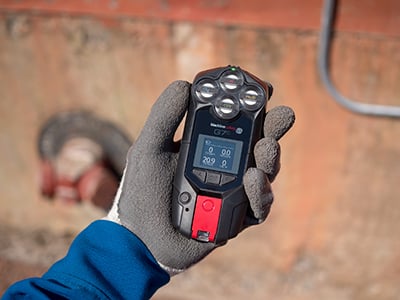Blackline Safety is a technology leader driving innovation in the industrial workforce through IoT (Internet of Things). With connected safety devices and predictive analytics, Blackline enables companies to drive towards zero safety incidents and improved operational performance. Blackline provides wearable devices, personal and area gas monitoring, cloud-connected software and data analytics to meet demanding safety challenges and enhance overall productivity for organizations with coverage in more than 100 countries. Armed with cellular and satellite connectivity, Blackline provides a lifeline to tens of thousands of people, having reported over 200 billion data-points and initiated over seven million emergency alerts. For more information, visit BlacklineSafety.com and connect with us on Facebook, Twitter, LinkedIn and Instagram.
6 Tips for Dealing with Black Ice
Blackline Safety, Leader in Connected Gas Detection & Lone Worker Safety
November 13, 2012
 With winter fast approaching, the risk of a slip, trip, or fall as a result of black ice increases. To help reduce this risk, follow the simple steps below:
With winter fast approaching, the risk of a slip, trip, or fall as a result of black ice increases. To help reduce this risk, follow the simple steps below:
But first, What is Black Ice?
Black ice (also known as clear ice) forms when water freezes in such a way that it appears completely clear to the eye. The clarity of the ice frequently causes the pavement below to show through, creating the illusion that no ice is present. This poses a great deal of risk that pedestrians, bicyclists, and motorists may be unaware that there is a danger. Black ice can form even when the surrounding temperature is above 0°C. As such, areas across Canada and the United States of America can experience black ice conditions.
What Can Be Done to Reduce the Risk of a Black Ice Fall?
In order to avoid a slip, trip, or fall from black ice:
1) Communicate the risk - If there is a risk of slipping due to ice, be sure to post some kind of warning notification. Not only will this keep the danger at the forefront of your employees consciousness, but it will also warn visitors to your facility of the danger.
2) Wear a robust tread - Leather-soled or shallow-tread rubber-soled shoes are not enough to reduce the risk of a slip under normal icy conditions, let alone black ice conditions. Avoid slips by wearing appropriate winter footwear with a friction co-efficient appropriate to the circumstances. For more information on picking good shoes, check out the article 6 Tips for Avoiding Slips, Trips, and Falls in the Workplace.
3) Manage walkways - Areas of traffic should be managed to help reduce the risk of slipping. Salt is an effective deicing agent down to temperatures of -18°C. Other compounds can help remove the ice at even lower temperatures.
4) Penguin-walk -Don't be embarrassed, it's safety! When walking over icy surfaces, take very small steps in order to maintain balance. Do not put your hands in your pocket (this increases you risk of broken bones should you fall), and keep your eyes ahead of you.
Spread gravel over walkways to add additional grip or friction.
5) Scratch the Surface - Sometimes you cannot melt the ice, smash it, or shovel it away. If this is not possible, use a spade or ice-spade to mar the surface. Doing this causes black ice to become more easily visible and provides greater traction to those walking over it.
6) Avoid Walking on the Ice When Possible - It is possible that you or someone you work with may need to walk over an icy patch at some point. Until that moment arrives, try to avoid walking over riskier areas. Take non-icy routes and avoid the risk altogether.
- - -
While any one of these techniques can help reduce the risk of a slip on black ice, you should always try to make use of all of the methods together in order to reduce the risk as much as possible.
Always remember that the safest way to avoid slipping on any ice however, is to avoid walking on it altogether.
Get In Touch
Let’s start a discussion about your safety challenges and needs.
Related Blog Posts
Engage Your Workers and Drive Change: Technology Adoption Workbook
February 29, 2024
Looking for practical tools and easy-to-use templates on how to engage workers, drive change, and integrate connected technology into your safety...
Elevating your Lone Worker Safety Program: A Comprehensive Guide and Webinar Recording
February 06, 2024
Are you confident your organization is doing everything possible to ensure lone worker safety, security, and well-being? Whether you have employees...
Tackling "Big Brother" Monitoring Concerns
January 17, 2024
Five steps for safeguarding workers—and protecting their right to privacy As the concern for lone worker safety continues to rise — with nearly 70%...


